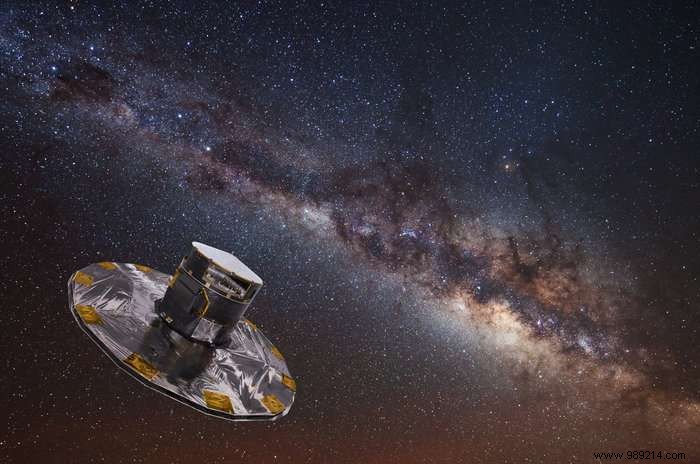Based on data from Kepler and Gaia telescopes, a team of astronomers tried to estimate the number of potentially habitable planets in the Milky Way. Details of this work are published in The Astronomical Journal.
Proposed in 1961 by Dr. Frank Drake, the Drake Equation is a famous formula for estimating the potential number of extraterrestrial civilizations in our galaxy that we might come into contact with . The equation takes into consideration several factors:the number of stars that form annually in our galaxy, the share of stars with planets or the expected number of planets potentially suitable for life per star. It also takes into account the part of these planets where life actually appears, the part of these planets where intelligent life appears and the part of these planets able and willing to communicate. Finally, the equation considers the average lifespan of a civilization (in years).
The problem, however, is that none of these factors is known with certainty . For some we only have rough estimates, while for others we are totally in the dark. Thus, taking into account this degree of uncertainty, the Drake equation estimates that there are between one and one hundred million technological civilizations in our galaxy. In other words, the range is large.
As part of a study, a team of astronomers from the SETI Institute, NASA and other international organizations relied on data from Kepler to produce a more reliable estimate of one of the factors in the equation. This was to calculate the number of habitable planets in the galaxy .
With this in mind, the researchers focused on Earth-like (and therefore most likely rocky) exoplanets orbiting Sun-like stars. They are of the same type, substantially the same age and have a roughly equivalent surface temperature. They also considered only the planets evolving in the zone of their star authorizing the presence of liquid water on the surface.
Note that previous estimates on determining the number of potentially habitable exoplanets in our galaxy were only based on the distance between the planet and its star . This new research this time considers another factor:the amount of light received by the planet . With this in mind, the team also relied on data from the European Space Agency (ESA) Gaia mission.

Combining all of this data, the researchers then estimated about 300 million the number of potentially habitable planets in our galaxy. According to the study, some could even be positioned less than thirty light years from our Sun .
It should be noted, however, that in their analysis, the researchers did not really consider the importance of the atmosphere . Also, this estimate may be refined downwards or upwards as we better understand how a planet's atmosphere can affect its ability to support liquid water.
Knowing how common the different types of planets are remains nevertheless "very valuable for the design of future exoplanet search missions “, according to Michelle Kunimoto, who co-signs this work. "Surveys of potentially habitable small planets around Sun-like stars will depend on results like these to maximize their chances of success “.